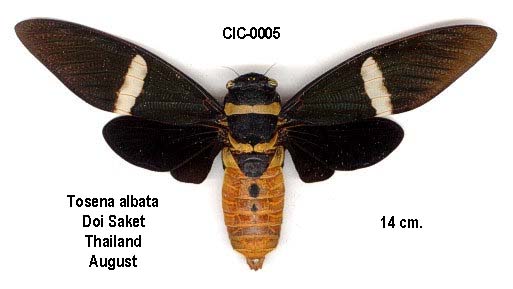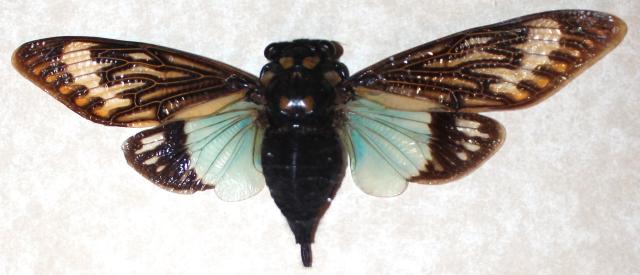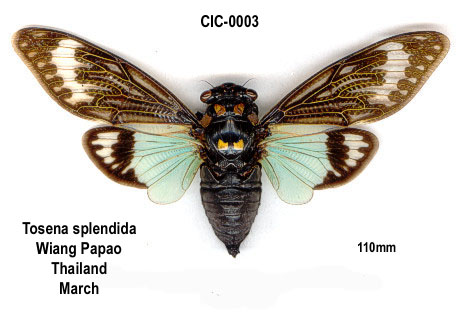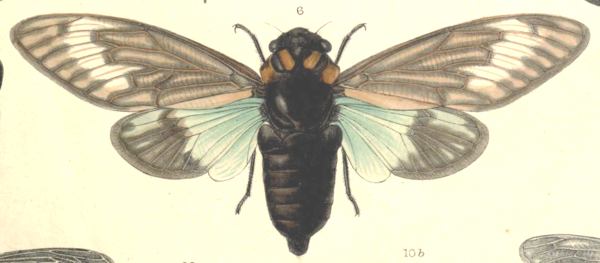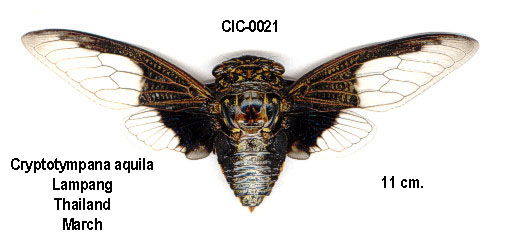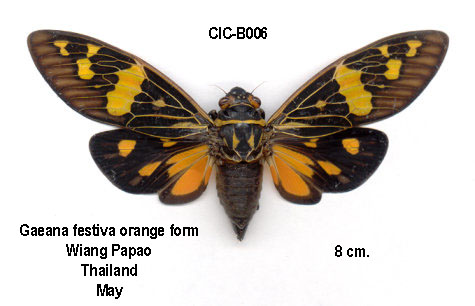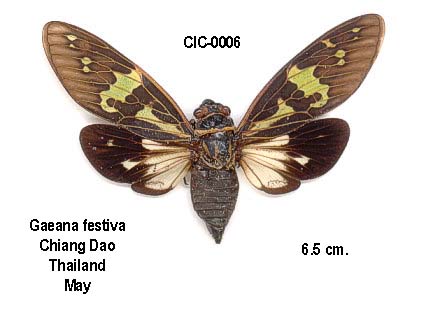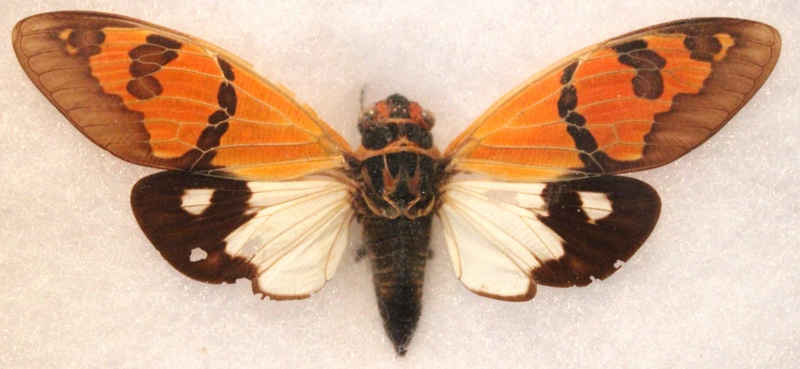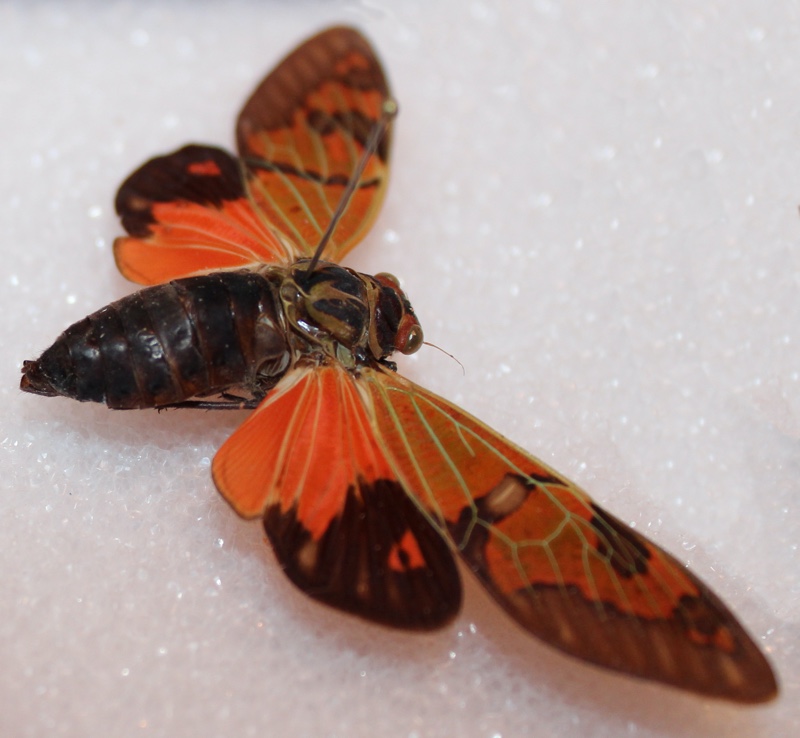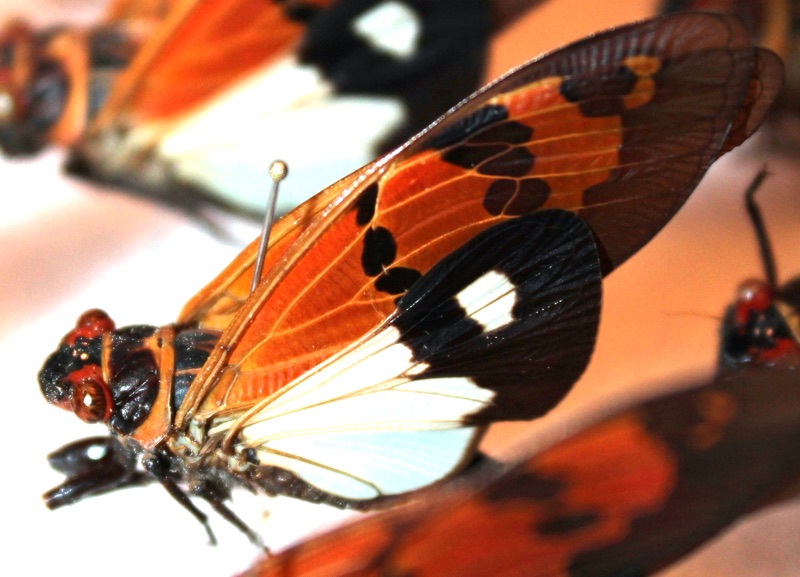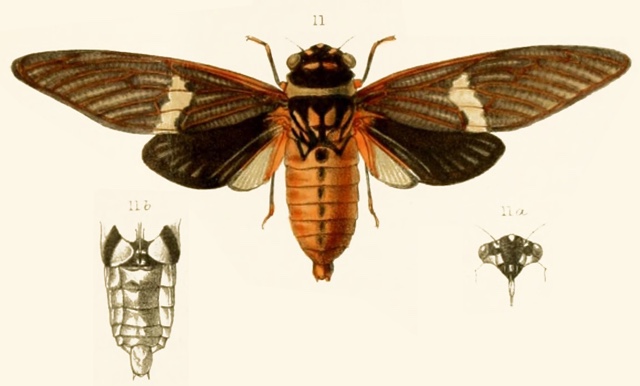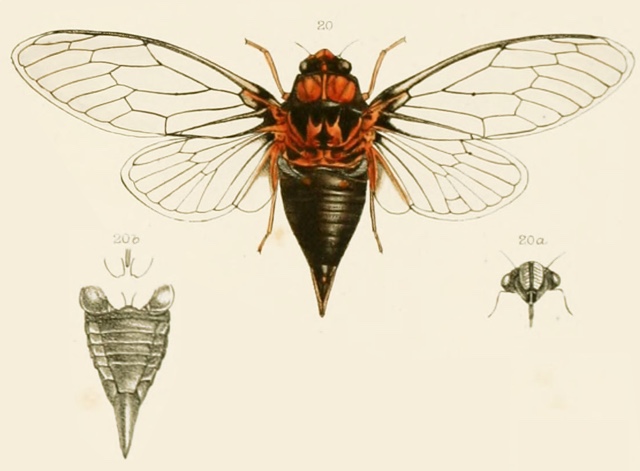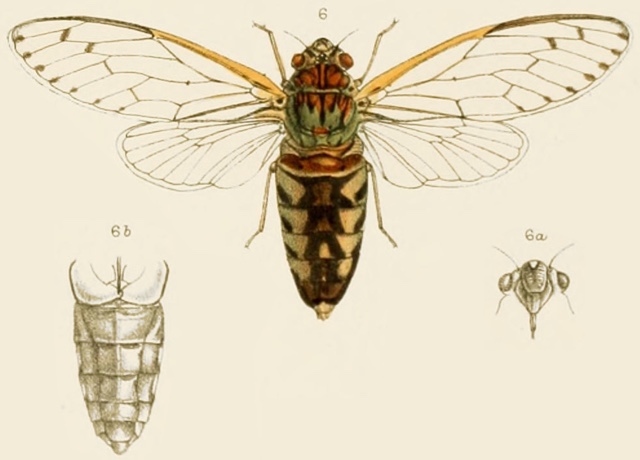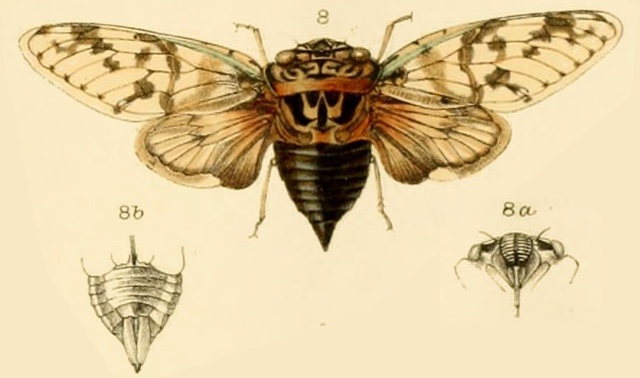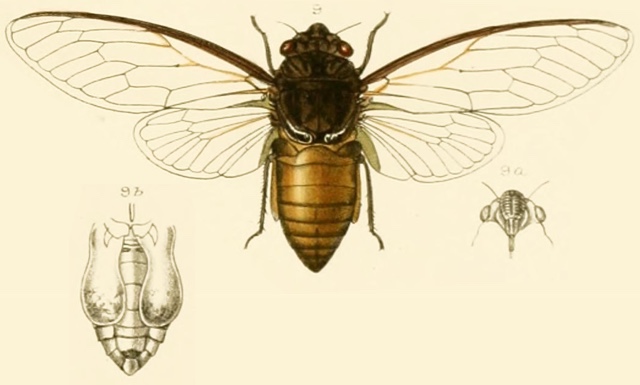Platypleura hampsoni is a cicada found in India.
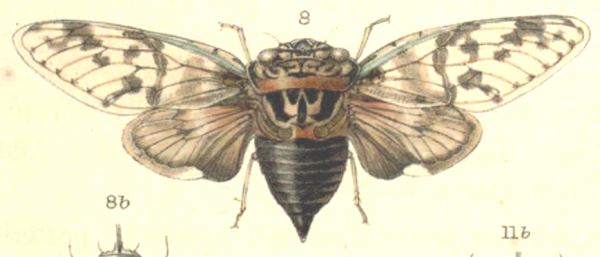
Image and Description from A Monograph of Oriental Cicadas by W. L. Distant. 1889-1892. Read it on the Biodiversity Heritage Library website:
Male. Head luteous; front with a number of black linear markings; vertex with a transverse, narrow, black fascia between the eyes, and with a central black spot containing the ocelli. Pronotum greenish-ochraceous, the disk with the following black markings: — a central I-shaped spot, on each side of which are some oblique linear markings; the lateral dilated margins are black, and the anterior margin is narrow — and the posterior margin broadly— dull reddish ochraceous. Mesonotum greenish-ochraceous, with the following black spots: — four obconical from anterior margin, of which the central two are smallest; and a large, oblong, discal spot, with a small partly rounded spot on each side of it; the basal cruciform elevation dull reddish ochraceous. Abdomen above black. Head beneath, with the face black, marked with luteous transverse lines; sternum somewhat ochraceously pilose; abdomen beneath black, the segmental margins ochraceous, the anal appendage of the same color; legs castaneous, streaked or spotted with piceous and luteous. Rostrum black, the basal portion luteous.
Tegmina pale hyaline, with the venation brown, the costal membrane greenish, the basal third somewhat opaque, with darker transverse markings and small basal black markings; a double irregular series of dark brown spots cross the tegmina at about center, a dark brown fascia at bases of upper apical areas, a few small subapical spots and some small marginal spots of the same color. Wings brownish-ochraceous, paler at apex than at base and very pale across the center, with a white marginal spot near anal angle; the venation brown.
The rostrum reaches the basal abdominal segment; the lateral margins of the pronotum are distinctly angulated; the face is robustly gibbous, with a profound central longitudinal sulcation; the posterior tibijE have three distinct spines on each side of apical half.
Long. excl. tegm. 2 . 23 millim. Exp. tegm. 70 millim. ; exp. pronot. angl. 13 millim.
Hab. — Continental India : Neelgiri Hills, northern slopes, 3500 & 5000 feet (Hampson — coll. Dist.).
Scientific classification:
Family: Cicadidae
Subfamily: Cicadinae
Tribe: Platypleurini
Genus: Platypleura
Species: Platypleura hampsoni (Distant, 1887)
For more information about this cicada, visit Cicadas of India.
